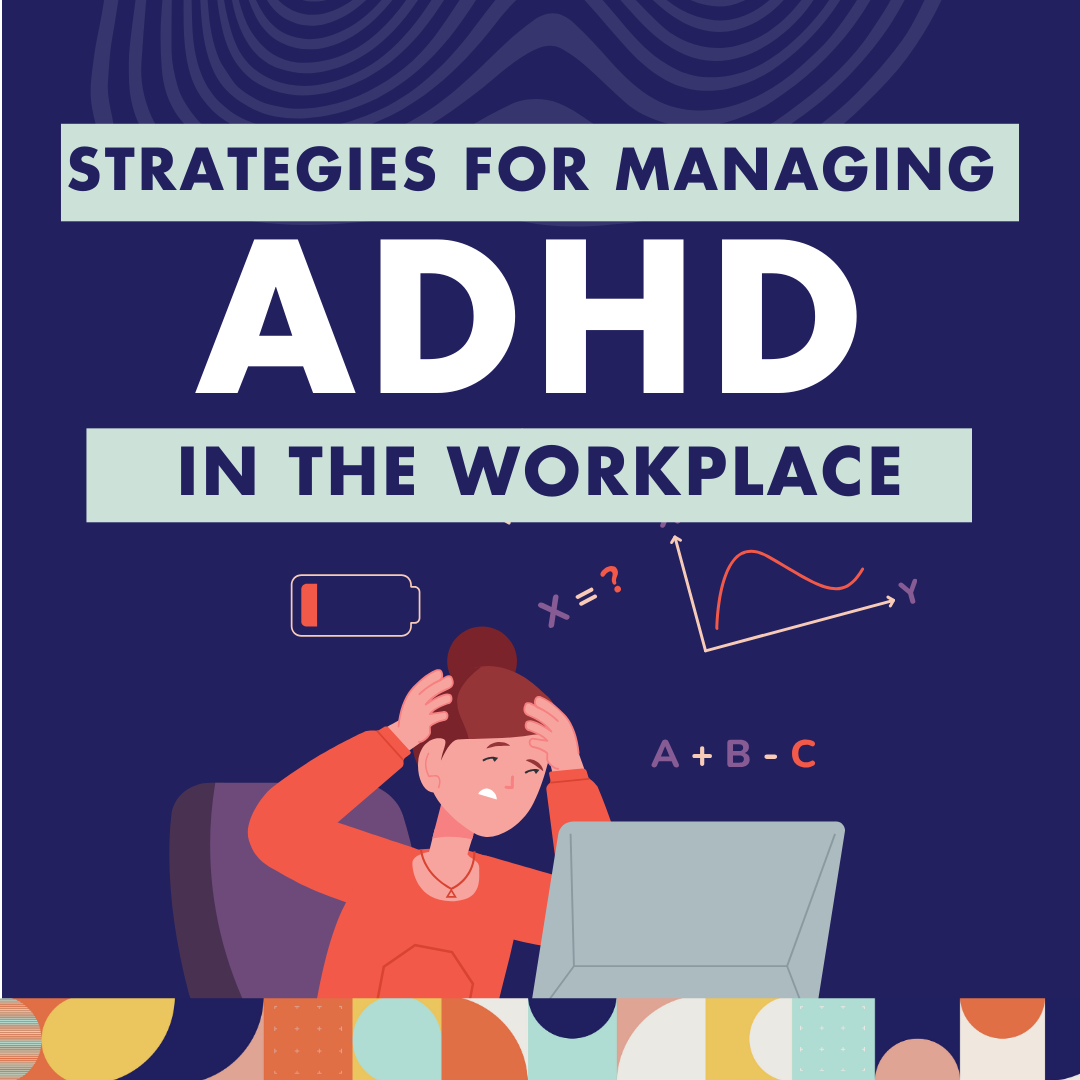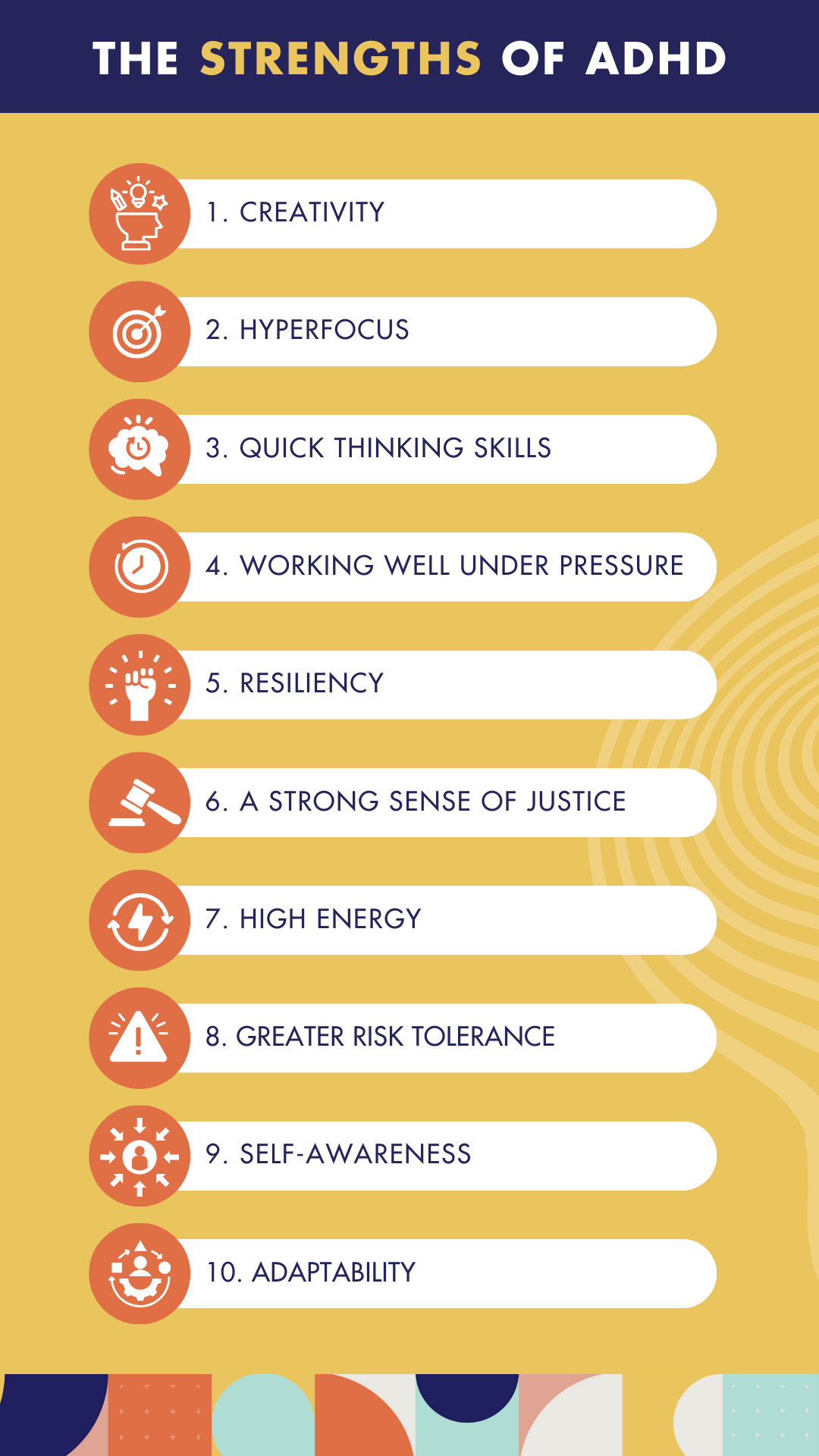Strategies for Managing ADHD at Work
Did you know that approximately 366 millions adults worldwide have ADHD?
Often, ADHD is thought of as a childhood disorder. However, the challenges experienced by individuals with ADHD not only continue into adulthood, often becoming more difficult to navigate as they move into traditional work environments. These difficulties can include an inability to focus, lack of motivation, and even total burnout.
So what do managers, employees, and executives do? How do we address the necessary accommodations for ADHD? Or, even better, how do we harness ADHD so employees are empowered rather than discouraged?
Let's explore ADHD and uncover insights to help your team thrive.
What is ADHD?
Attention Deficit Hyperactivity Disorder or ADHD is a neurological disorder that directly impacts the way the brain functions.
ADHD impacts how people plan, focus, and execute tasks. It is not defined as a mental illness, learning disability, or behavior disorder—rather, ADHD is a developmental disorder with a hereditary component.
It is important to note that people do not develop ADHD from their environment, but are born with it.
The Types of ADHD
There are 3 types of ADHD:
🚀 Inattentive Type
Individuals with this ADHD type often have trouble focusing on a single task, have difficulty organizing their thoughts, lose important things often, and may appear to be daydreaming. Women tend to be diagnosed more often with inattentive type.
🎊 Hyperactive-Impulsive Type
This type is defined by the more “traditional” ADHD symptoms such as impatience, trouble being quiet and sitting still, and acting without thinking about consequences.
🎆 Combination Type
This describes individuals who have symptoms that do not fall exclusively into either of the above types.
Despite these defined types of ADHD, symptoms can change over time as well as with medication, psychotherapy, and other treatments.
How do ADHD and DEI Go Together?
ADHD is often overlooked within the broader concept of diversity, equity, and inclusion. But why is that?
The most sought after DEI modules tend to focus on the more visible aspects of diversity, such as race, gender, and physical disabilities. ADHD and other neurological conditions are invisible and often overlooked, leading to lack of support, awareness, and empathy.
However, approximately 8.7 million adults in the U.S. have been diagnosed with ADHD. That means that—whether you are aware or not—you are very likely to encounter someone with ADHD at work. And, like any kind of marginalized person, an individual with ADHD may require accommodations, extra assistance, or modified work as needed.
It is important to remember that true inclusivity recognizes that both visible and invisible forms of diversity are
Challenges Faced by Employees with ADHD
1. Loss of Employment
Adults with ADHD are 61% more likely to be fired, 33% more likely to be laid off, and 53% more likely to quit their jobs.
2. Productivity and Performance Issues
ADHD is experienced very differently depending on the person, but unfortunately, the most common traits of ADHD are associated with laziness or not caring. These include being disorganized, often arriving late, or missing minute details.
Not only that, but when people with ADHD perceive themselves as a problem or are reprimanded for traits they cannot control, they have a tendency to push themselves beyond their capabilities.
3. Burnout
Burnout is an all-encompassing term to refer to feeling tired all the time, having an urge to escape, procrastinating, and general dysfunction. It can be caused by a number of factors including:
Overworking
Inability to detach from work
Inability to balance work and life
Perfectionistic tendencies and unreasonably high standards
These factors are even more prevalent in individuals with ADHD. In fact, individuals with ADHD are more prone to stress-related illnesses, with up to 24% of those on long-term sick leave meeting the diagnostic criteria for ADHD.
4. Difficulty with Time Management
Because of the executive dysfunction that comes with ADHD, managing time can be incredibly difficult. Neurotypical individuals are often able to balance performing beneficial tasks now and preparing others for tomorrow. ADHD causes people to be far more present-focused and concerned with immediate payoffs.
It is important to note that individuals with ADHD understand the importance of time management and organizing tasks accordingly. The difficulty comes from the act of performing said task rather than procrastinating.
How To Support Employees With ADHD
Offer Accommodations Without Judgment
Accommodations are crucial tools to ensure the equitable treatment of all employees. This way, their work environments are tailored to their unique needs and will ultimately result in better work outcomes and less frustration. These include:
✅ Frequent, supportive feedback and check-ins.
✅ Breaking down tasks into smaller steps.
✅ Reducing distractions by allowing workers to have their own space, work from home, or wear headphones.
✅ Ensure the workday is structured, but allows opportunities for movement and stretching.
Create ADHD-Friendly Work Policies
When it comes to DEI initiatives, having supports that specifically assist neurodiverse individuals is crucial to creating inclusive, welcoming environments. Support for ADHD creates equitable opportunities and pathways towards promotions, improved performance, and ultimately better work quality.
✅ Offering flexible work hours .
✅ Tailoring assignments to the individual employee based on their interests.
✅ Putting details and important information in writing as much as possible, potentially via email or a to-do list.
✅ Providing educational resources, courses, and training in DEI initiatives specific to mental health and neurodiversity.
Whenever possible, it is important to provide support systems for employees with ADHD and other neurodiverse identities. Not only are support systems critical to ensure employee success, but they also benefit neurotypical employees, too!
Why is it Important to Include Neurodiversity in DEI?
When leadership and management can empathize with and learn about neurodiversity, they are able to further influence other employees to do the same, reducing stigma and misunderstandings that might arise. Incorporating DEI initiatives specific to ADHD helps create a culture of empathy and understanding.
It also signals that your organization is committed cultivating space for all aspects of diversity, equity, and inclusion.
Besides all that, having neurodiverse individuals on your team actually results in a 30% increase in productivity. Not only that, but research suggests that employees with ADHD are more curious, inventive, and tend to think out-of-the-box.
Additional Resources
One of the best things we can do to embed diversity, equity and inclusion in our work practices is to continue educating ourselves. As individual and societal perspectives and research shift, as does our understanding of how employers can best utilize the strengths and talents of neurodiverse individuals.
With that in mind, we’ve included some links for employers to better understand ADHD. Plus, the resources below can help employees with ADHD develop strategies and best practices at work.
🔎 How to ADHD with Jessica McCabe
🔎 Centre for ADHD Awareness, Canada (Caddac)
🔎 Attention Deficit Disorder Association (ADDA)
🔎 Children and Adults with Attention-Deficit/Hyperactivity Disorder (CHADD)



